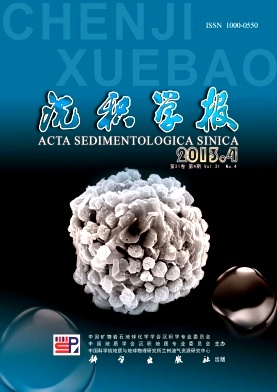Geochemical Feature of Upper Permian Wuchiapingian Cherts of Qiubei Region, Southeast Yunnan and Its Geological Significance
- Publish Date: 2013-08-10
-
Key words:
- Southeast Yunnan /
- Upper Permian Wuchiapingian /
- cherts /
- geochemical feature
Abstract: Cherts of the Late Permian occurred extensively in the Dian-Qian-Gui region, which provide critical information with respect to the study of tectonic setting and the formation of sedimentary basins. At present most attention has been focused on Guangxi and Southwestern Guizhou, however , few relevant research has been carried out in Southeast Yunnan. Based on petrogeology and geochemistry , the Wuchiapingian cherts of Upper Permian of Qiubei region,Southeast Yunnan have been systematically studied. The results show that all samples except P29 have much higher SiO2/Al2O3 ratios (>80),Al/(Al+Fe+Mn) ratio between 0.46 and 0.76;Ce/Ce* andLaN/CeNratios are 0.517~0.858 and 1.12~1.80, respectively; Chondrite-normalized REE patterns of the cherts characterized by significant negative Eu anomalies and LREE enrichment; Besides, the NASC-normalized Eu/Eu* ratio of P29 is 1.129. Combining with the published geochemical data of cherts from the equivalent horizons of Dongpan and Laibin region, we draw a conclusion that (1) The cherts of Qiubei and Dongpan region developed in a setting of continental marginal in the late Permian , and terrestrial debris is the main material source of the cherts of Dongpan. Meanwhile, the cherts of Qiubei are characteristic of biogenesis, and received little terrigenous input, and those of Laibin were deposited in an ocean basin with influence of submarine hydrothermal fluid and no input of terrigenous materials; the Eu/Eu*ratio of P29 is 1.129, which reflects its hydrothermal influence and implies the movement from both(either)Emeishan Mantle and(or)regional fault; During the late Permian, the water depth of Qiubei region deepen gradually from west to east with low water energy.
| Citation: | Geochemical Feature of Upper Permian Wuchiapingian Cherts of Qiubei Region, Southeast Yunnan and Its Geological Significance[J]. Acta Sedimentologica Sinica, 2013, 31(04): 621-629. |






 DownLoad:
DownLoad: